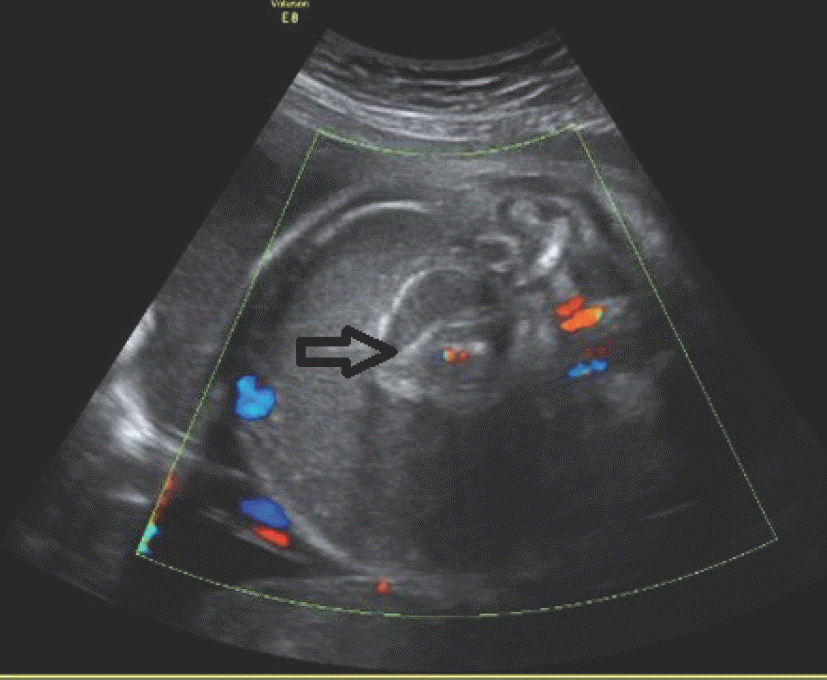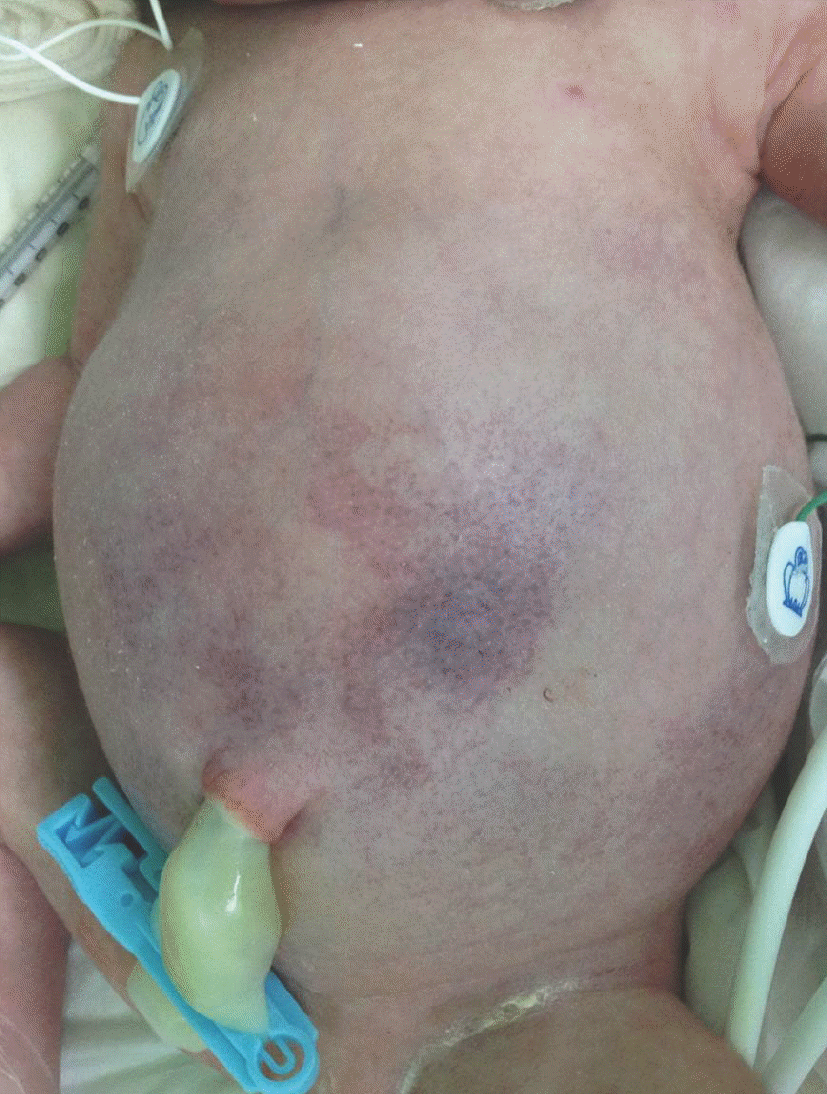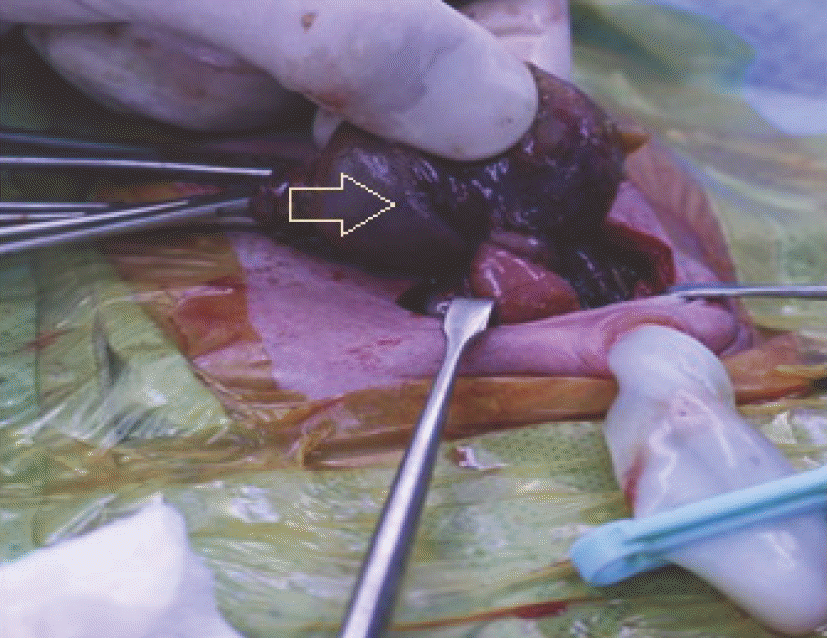Abstract
Intrauterine midgut volvulus is a rare and potentially life-threatening congenital disease that can lead to intestinal ischemia, sepsis and peritonitis caused by bowel perforation and meconium obstruction. Early detection and immediate treatment is crucial to improve the outcome. Herein, we report a preterm infant of 30 weeks of gestation with intrauterine midgut volvulus associated with meconium peritonitis who survived after cesarean delivery and immediate postnatal surgical intervention. The outcome of in-utero intestinal volvulus depends on optimal delivery timing and adequate postnatal treatment. Therefore, prompt multidisciplinary consultation and planning with obstetricians, neonatologists and pediatric surgeons is necessary to reduce the morbidity and mortality associated with fetal midgut volvulus, especially in the preterm period.
Go to : 
References
2. Taori K, Sanyal R, Attarde V, Bhagat M, Sheorain VS, Jawale R, et al. Unusual presentations of midgut volvulus with the whirlpool sign. J Ultrasound Med. 2006; 25:99–103.

3. Chung JH, Lim GY, We JS. Fetal primary small bowel volvulus in a child without intestinal malrotation. J Pediatr Surg. 2013; 48:e1–5.

4. Varetti C, Meucci D, Severi F, Di Maggio G, Bocchi C, Petraglia F, et al. Intrauterine volvulus with malrotation: prenatal diagnosis. Minerva Pediatr. 2013; 65:219–23.
5. Molvarec A, Babinszki A, Kovacs K, Toth F, Szalay J. Intrauterine intestinal obstruction due to fetal midgut volvulus: a report of two cases. Fetal Diagn Ther. 2007; 22:38–40.

6. Morikawa N, Namba S, Fujii Y, Sato Y, Fukuba K. Intrauterine volvulus without malrotation associated with segmental absence of small intestinal musculature. J Pediatr Surg. 1999; 34:1549–51.

7. Cho EH, Sung SI, Yoo HS, Ahn SY, Yoo SY, Chang YS, et al. Intrauterine midgut volvulus with malrotation in a preterm infant: a case report. Neonatal Med. 2013; 20:476–9.

8. Nakagawa T, Tachibana D, Kitada K, Kurihara Y, Terada H, Koyama M, et al. A case of fetal intestinal volvulus without malrotation causing severe anemia. Jpn Clin Med. 2015; 6:1–3.

9. Park GO, Kim JH, Lee JH, Lee JJ, Yun SW, Chae SA, et al. A case of premature born with bowel perforation and gangrene due to intrauterine midgut volvulus caused by meconium ileus. Korean J Perinatol. 2008; 19:312–7.
10. Yim GW, Yang HI, Cho HJ, Park YW, Kim YH. A case of fetal intestinal volvulus diagnosed by prenatal ultrasonography in the 3rd trimester. Korean J Ultrasound Obstet Gynecol. 2007; 9:227–31.
11. Park WH, Park SM, Choi SO. Ileal atresia secondary to intrauterine segmental volvulus. J Korean Assoc Pediatr Surg. 1995; 1:177–80.

12. Crisera CA, Ginsburg HB, Gittes GK. Fetal midgut volvulus presenting at term. J Pediatr Surg. 1999; 34:1280–1.

14. Kornacki J, Czarnecka M, Blaszczynski M, Skrzypczak J, Gadzinowski J, Jankowski A, et al. Congenital midgut volvulus associated with fetal anemia. Fetal Diagn Ther. 2010; 28:119–22.

15. Steffensen TS, Gilbert-Barness E, DeStefano KA, Kontopoulos EV. Midgut volvulus causing fetal demise in utero. Fetal Pediatr Pathol. 2008; 27:223–31.

16. Ohuoba E, Fruhman G, Olutoye O, Zacharias N. Perinatal survival of a fetus with intestinal volvulus and intussusception: a case report and review of the literature. AJP Rep. 2013; 3:107–12.
Go to : 




 PDF
PDF ePub
ePub Citation
Citation Print
Print





 XML Download
XML Download